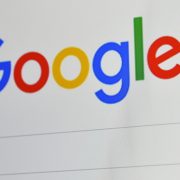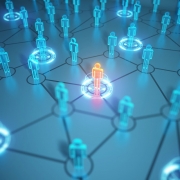Harvard behavioral economist Sendhil Mullainathan confessed in a 2017 New York Times commentary that he has long succumbed to a disturbing choice failure, drinking a carton of Diet Cokes daily and never even trying another “equivalent,” though cheaper, diet cola. He expressed confidence that he should correct his failure for financial reasons: “As a frugal economist, I’m well aware that switching to a generic brand would save me money, not just once but daily, for weeks and years to come. Yet I only drink Diet Coke. I’ve never even sampled generic soda.”
Mullainathan explained that he had not corrected his errant ways because the money saved would be inconsequential, and he could well afford to stick with “this little extravagance.” Still, he insists, “I’m clearly making an error, one that reveals a deeper decision-making bias whose cumulative cost is sizable: Like most people, I conduct relatively few experiments in my personal life, in both small and big things.”
Mullainathan believes he has found a choice bias that undercuts the standard economist’s claim that people are rational. But has he? At first glance, his choice not to experiment doesn’t make sense. But I think Mullainathan is more rational than he thinks he is. Why? Because the critically scarce resource, which he doesn’t mention, is his brain. Our brains seek to optimize the allocation of their own internal resources, which are mainly neurons and energy. A full understanding of rationality should include economizing on using one’s brain.
Rationality and Habitual Choices
Mullainathan assures readers that his own and others’ added choice experimentation would clearly be rational and welfare-enhancing because the downside is limited, “while the potential gains are disproportionately large.” As support, he notes that almost half of consumer choices are, like his, habitual. And, in context, he clearly is suggesting that there’s something wrong with habitual choices.
Researchers have discovered that people often stick with their choices. Mullainathan adds another example, writing, “[M]any people persist in buying branded products even when equivalent generics are available.”3 But is there something categorically wrong with habitual choices? Habits may indeed result in decisions without contemplation and with errors, but habit formation need not be an irrational decision process.
Scarcity and Brain-Focused Economics
I report on Mullainathan’s commentary because it reflects problems that often crop up in behavioral research. I suggest that a brain-focused foundation for economics—organized around the premise that the human brain rationally seeks to optimize use of its own internal scarce resources in pursuit of its own goals—can help economists, both neoclassical and behavioral, to understand people’s choices better than through the lens of biases or irrationalities.
I see three problems with Mullainathan’s thinking.
First, it’s true that one of conventional economists’ founding premises is perfect rationality. But consider a brain-focused perspective. The brain simply does not have the capacity to deal with all the demands on its limited resources all the time without error. The brain can economize on its resources by adopting decision rules (algorithms and heuristics, which are favored behavioral constructs). We know that the frequent application of some rules will lead to errors, but those rules can still make economic sense to neoclassical, if not also to many behavioral, economists.
As with rules for baseball games and within constitutions, as well as rules-of-thumb in carpentry, less-than-perfect decision heuristics can lead to welfare improvements: the gains from the “good” decisions can often more than offset the losses from the “bad” ones. Moreover, simply by not considering all decisions carefully and, instead, applying a rule, we can free our mental resources to improve athletic performance, to increase the rationality of the many decisions that we make daily, or even to correct other rules proven to be unnecessarily flawed.
Of course, some rules and heuristics can, on balance, undercut welfare, but they can be corrected and may well be if the corrections make economic sense. Some rules and heuristics might not be corrected because the required drain on the brain’s neuronal and energy resources can have greater welfare losses than the losses from continued mistaken decisions. This kind of thinking doesn’t rule out irrational rules and heuristics, but it certainly narrows their prevalence and suggests that researchers should pause before declaring isolated decisions “irrational.”
The second problem is Mullainathan’s claim that his choice error indicates a general problem of people not experimenting broadly. Does his claim have the general validity he asserts (especially when he professes to have never experimented with alternative diet sodas, although he seems to know their relative merits)? Experimentation abounds in nature. Honey bees and hummingbirds spend their lives experimenting, with their survival often hanging in the balance as they trade off risk and search costs in pursuit of food and mates. Humans’ hunter-gatherer ancestors surely did much the same, leaving subsequent generations with a predisposition to forage (a form of experimentation), not only for products themselves, but also for others’ assessments of the products they have tried. When people go shopping, they appear engrossed in forms of experimentation—for example, feeling the fabric of various clothing items and accepting squirts of different lotions. Many people experiment with potential mates. People even think through alternative ways that conversations might unfold before they have them.
Indeed, one of the reasons for experimentation is the uncertainties that behaviorists, correctly, insist abound. And, indeed, experimentation often reduces uncertainties. One reason for malls and department stores within malls is not only to reduce search costs for known goods, but also to lower experimentation costs, thereby converting many uncertainties to manageable risks.
If people were as disinclined to experiment as Mullainathan suggests, it would be hard to explain the sizable worldwide fashion industry that constantly churns out various styles, colors, and textures in its clothing lines. The electronics industry similarly continues to upgrade (and downgrade) a multitude of variations in its products. The advertising industry spends nearly $200 billion annually in the United States, fully one percent of Gross Domestic Product, much of it on the presumption that many consumers can be persuaded to “experiment.”
Firms convert some market uncertainties to manageable risks by developing portfolios of products, knowing that some products will fail. The human brain does much the same with decision portfolios, bounded by its evolved resource and processing constraints, as well as by decision budgets (or what behavioral economist Richard H. Thaler calls “mental accounts”5).
No one should expect consumers, operating within the rationality limits of their brains, to be totally flexible in their choices, trying every new product line that is launched. But it doesn’t follow that Mullainathan has identified another broad-based choice failure that undercuts welfare. Indeed, the opposite can be true. Decision mistakes grounded in decision rules can result in more mental resources being available for more-important decisions, making us better off.
Go back to Mullainathan’s example of diet soda. He could make a mental note to try other sodas. Let’s say that the probability that he would find a cheaper soda that’s as good as Diet Coke is 1 in 10. Assume that he would save $4.00 a week on the cheaper brand. That’s $200 a year over, say, the next 30 years, for an overall saving of $6,000 (assuming a zero interest rate; for a more realistic positive interest rate, the saving would be less). So his expected value of trying the other diet soda is $600.6 Professor Mullainathan is a chaired professor at Harvard University, which means that his salary is probably at least $200,000, and his consulting rate is probably at least $600 an hour. So he can make, in 2 hours, enough to earn $600 after tax. Would those two hours be better spent thinking about and trying a different diet soda or thinking harder about a consulting client’s problem?
The relevant issue for consumers is not whether they make failed choices or even miss undertaking experiments that could lead to improved purchases. The relevant question is this: when scarcity (mental) constraints prevail, are consumers’ brains’ decision portfolios across a vast number of decisions (including product and commute choices), on balance, more competitive, beneficial, and economical than achievable alternative portfolios?
Mullainathan suggests that his problem is a failure to experiment. I suspect he likely does more experimentation than he indicates by focusing on his Diet Coke habit. After all, his column—like so much of the give-and-take of academic discourse—is something of an experiment in sharing new thinking on a wider audience. I suspect that it would be better for him to indicate that he has likely depleted his “mental account” for experimentation on more productive endeavors.
The third problem is that Mullainathan may not know as much about consumer choices and the resistance to change as he intimates. He claims that consumers, in general, stay with their choices even when “equivalent generic options are available.” But equivalence is in the eye of the beholder. After all, one of the pillars of economic thinking is that values and tastes are subjective.
Drawing equivalence among goods is also a strong claim coming from a behaviorist, who likely agrees that “frames” (and “anchors”) are endemic to choices and surely vary substantially over a large number of people and their particular local circumstances. Obviously, many people drink different generic diet sodas, given that Coke and Pepsi have less than half the market—and that all sodas have declined by more than a fourth over the past dozen years, in favor of water and tea. Might Mullainathan’s choice failure be far less general than he suggests and understandable from the perspective of the brain’s limited resources?
The more general point is that putting some choices on automatic pilot can free up neurons and energy to be used in weighing a multitude of other, more important bodily and external decisions more carefully. Hence, habits can enhance the efficiency and rationality of the brain’s overall decision making, both internal and external, and can add in many unseen ways to human welfare—and this can be true even when habits occasionally, or even often, lead to decision errors.
Mullainathan cites a study that found that commuters saved an average of just under seven minutes when, because of station closings, they were forced to take alternative routes for two days. In spite of their time savings, when the stations reopened, only about 5 percent stayed with their new routes. Mullainathan suggests that our difficulty with experimenting is that experimentation can be “painful.” But pain is hardly a prohibitive obstacle. People do many things that come with pain, for example, running marathons. Is it possible that it’s painful enough that experimenting just isn’t worth it? Moreover, notice the other important part of the study’s finding: about 95% of commuters returned to their old route. So even though they had had a chance to experiment—and the pain was a sunk cost—they decided that they liked the old routes better. Maybe they returned to their old routes because the routes were less costly in time and outlays or more pleasant, or both. From a brain-focused view of the commuting-choice problem, the commuters’ propensity to stay with their old routes becomes more understandable for two major reasons: commuters’ brains have limited resources and consumers simply may not be willing—rationally so—to be actively involved in every choice on products and in experimenting, and they can’t be. The riders may have decided to apply their scarce mental resources, including decision-making time, to an array of choices that Mullainathan has never considered.
In addition, because of the brain’s scarcity of neurons and energy, it is unlikely to waste its time on trivial (or “inconsequential”) differences in the costs and benefits of particular decisions when it has an array of other decisions that may provide greater net gains. Proof that a new route saves time is hardly proof that the brain has, on balance, made mistakes across its many allocation decisions. In short, the human brain is unlikely to consider many decisions in isolation, as Mullainathan suggests it should.
Concluding Comments
The chief lesson? Behaviorists often lay out the evidence on the brain’s “bounded rationality,” but report people’s decisions, such as the choice of sodas or travel routes, in isolation from one another. That perspective should cause behaviorists to think twice before declaring findings from isolated experiments to be “biases,” “errors,” or “irrationalities.” That may be so when conventional economists’ premise of perfect rationality in human decision making is the standard for judgment. But it may not be so when the brain’s own internal level of rationality is optimized, given its evolved resource and processing constraints.
Richard McKenzie is the Walter B. Gerken Professor (emeritus) in the Merage School of Business at the University of California, Irvine.













